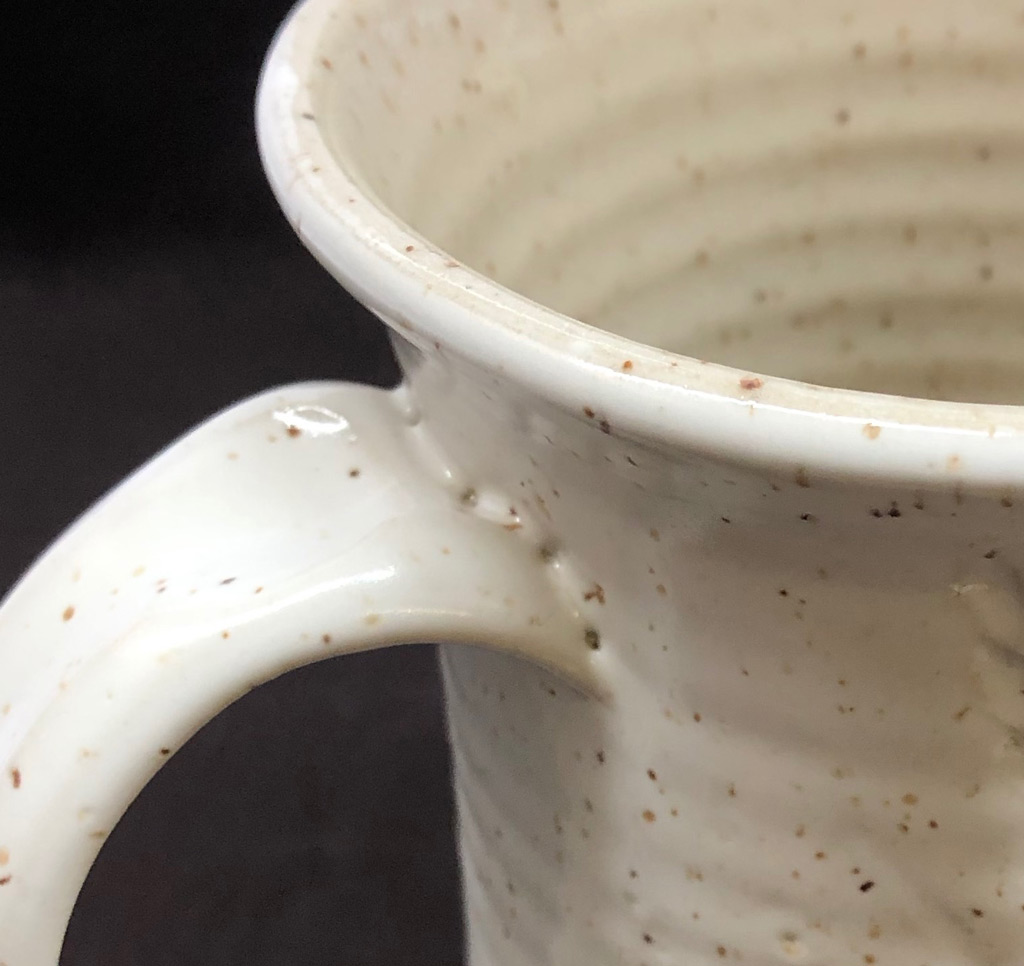| Monthly Tech-Tip | No tracking! No ads! | |
URL: G2934Y variations for fired hardness, COE adjustment, less crawling, etc
Click the link below to go to this page
https://insight-live.com/insight/share.php?z=y9rvvqsPy4
G2934Y is a popular recipe used worldwide in industry and by potters and hobbyist. This page shows it, and four variations, that adjust for different purposes. All have the same chemistry, but source the needed oxides from different materials.
Related Information
Matte cone 6 glazes have identical chemistry but one melts more. Why?

This picture has its own page with more detail, click here to see it.
These are 10 gram GBMF test balls that we melted on porcelain tiles at cone 4 (top two) and cone 6 (bottom two). They compare the melt fluidity of G2934 (left) and G2934Y (right). The Y version sources its MgO from frit and talc (rather than dolomite). It is a much more fluid melt because the frit is yielding the oxides more readily. But Y has a key benefit: It has a much lower LOI, producing fewer entrained air bubbles and therefore fewer surface defects. And, even though it runs much more, it has the same matte surface! As long as it is applied at normal thickness, the extra melt fluidity does not cause any running. And it has another benefit: Less cutlery marking issues. It is actually a very durable and practical food surface glaze, having a low thermal expansion that fits almost any body. Although these appear glossy here, on ware they have the identical pleasant silky matte surface.
Melt fluidity differences are not obvious by just comparing glazed ware

This picture has its own page with more detail, click here to see it.
These two Plainsman M370 test mugs were fired at cone 6, the left one with G2934 matte glaze, the right one with G2934Y4 matte. They look and feel identical in the hand. The two glazes have the same chemistry. But they employ different materials to source that chemistry. The secret of of the matteness is high MgO (magnesia content). In the glaze on the left MgO is sourced by dolomite, a lot of it. The glaze on the right sources it from a special frit, Ferro 3249. The impact of this difference is visible in the melt fluidity tester, the fritted one is melting and flowing much better. On other clays, especially stonewares, the G2934 can have a dry surface that cutlery marks. Thicker applications make it worse. But the Y version exhibits no such issues. Its mattness, durability, cleanability and hardness are so good that it is being used in floor tile.
Crawling in G2934Y Zircopax white glaze: Here are some fixes.

This picture has its own page with more detail, click here to see it.
G2934Y, a variation of the G2934 base, is a good stain matte base glaze but it is not without issues. It has significant clay content in the recipe and high levels of Al2O3 in the chemistry, these make it susceptible to crawling. This base is normally fine as is but when opacified or certain stains are added (especially at significant percentages) it can crawl. This has 10% Zircopax. Even though the glaze layer thickens at the recess of the handle join it is still crawling. We also get this on the insides of mugs where wall and foot meet at a sharp angle. This was initiated because the glaze cracked here during drying. Normally it would heal but the zircon stiffens the melt, making it less mobile. The easiest solution is to adjust the specific gravity of the glaze to 1.44 and flocculate it to thixotropic, this assures that the application is not too thick. Another measure is to add a little CMC gum (by replacing some of the water with gum solution). Lastly, use a blend of tin oxide and Zircopax, as in the G3926C version of the recipe, to opacify it.
Links
| Recipes |
G2934Y - Cone 6 Magnesia Matte Low LOI Version
The same chemistry as the widely used G2934 but the MgO is sourced from a frit and talc instead of dolomite. It has a finer surface, less cutlery marking and staining. |
| Recipes |
G2934 - Matte Glaze Base for Cone 6
A base MgO matte glaze recipe fires to a hard utilitarian surface and has very good working properties. Blend in the glossy if it is too matte. |
Got a Question?
Buy me a coffee and we can talk

https://digitalfire.com, All Rights Reserved
Privacy Policy
